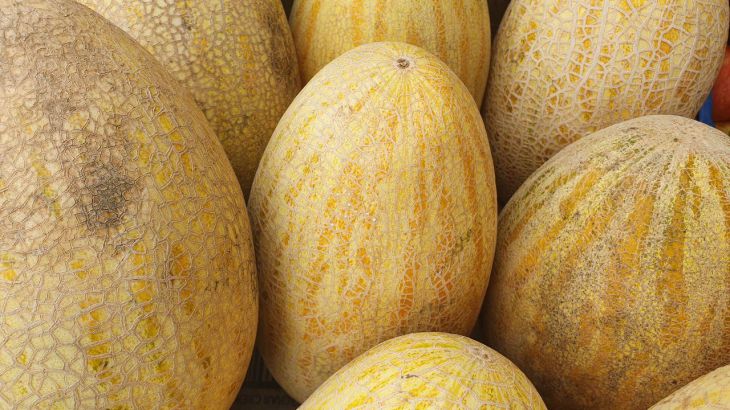Breeders are working wonders to develop varieties of southern plants that can grow in cold climates.
But still, these plants require special treatment, because they have become only a little more tolerant to the harsh conditions of more northern regions.
This article will discuss the secrets and subtleties of growing that experienced gardeners use to get tasty melons in a cold climate.
7 Secrets of a Rich Melon Harvest
1. Planting in the grass.
Warmth is the most important condition for growing this plant. The optimum temperature at which the melon feels most comfortable is 27–30 degrees.
But how can such conditions be created at the beginning of summer, when the nights are cold and the soil has not yet warmed up well?

The solution is to plant in a warm hole. You need to dig a deep planting hole, at the bottom of which you put chopped nettles. If you don’t have nettles, take any other grass.
The layer should be 7-10 cm. Sprinkle the grass with soil in a layer of 5-7 cm. Plant melon seedlings on top. The grass will warm the soil, creating comfortable conditions for the roots.
2. Planting in a warm bed.
A warm bed is created using the same principle as a warm hole. Green grass is placed in the trench, which must be mixed with other organic waste (hay, straw, chopped tree and bush branches, sawdust).
This mixture should be watered with any EM preparation, a layer of soil should be placed on top and melons should be planted. This way the plants will be provided not only with warmth, but also with nutrition.
3. Watering and protection of the fruit.
Melon is very demanding of moisture, much more demanding than watermelon. Therefore, it should be watered regularly and abundantly, without relying on rain.
But there is one subtlety: the fruits need to be placed on boards or pallets, otherwise the peel will rot or begin to crack from constant contact with damp soil. And if the summer is cool, then rotting is inevitable.
4. Nitrogen control.
With excess nitrogen, the tops actively develop, and fruiting is delayed, which cannot be allowed in a cold climate.
Therefore, when applying nitrogen fertilizers, it is advisable to slightly reduce the dosage.
5. Growth restriction.
To harvest, the melon must be pinched and the number of fruits must be regulated. This plant is ready to creep and bear fruit endlessly, but due to the short warm season, the fruits will not have time to ripen.
You should leave 3-4 fruits on the plant and pinch off the tops of the shoots.
6. Growing in a greenhouse.
Melon grows well in a greenhouse, but to save space, you need to build a trellis for it, and then tie up the fruits, placing them in bags so that they do not break the vine with their weight.
7. "Release into freedom."
Some gardeners use an interesting life hack. They plant a melon in a greenhouse near a wall. And when the vine starts to grow, they make a hole in the greenhouse (usually film structures) and release the vine outside.
The plant's root system remains warm, while the tops grow outside.
Learn from the experience of seasoned gardeners and use it on your plot to grow a southern guest even in a cold climate.








